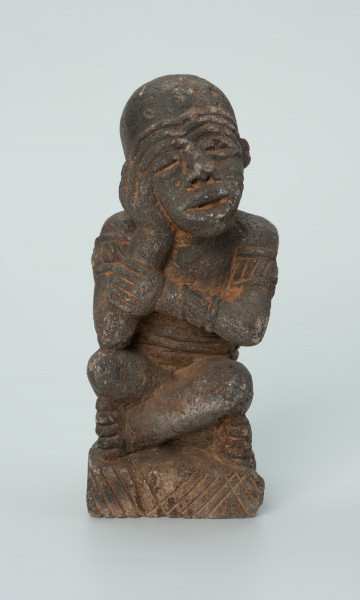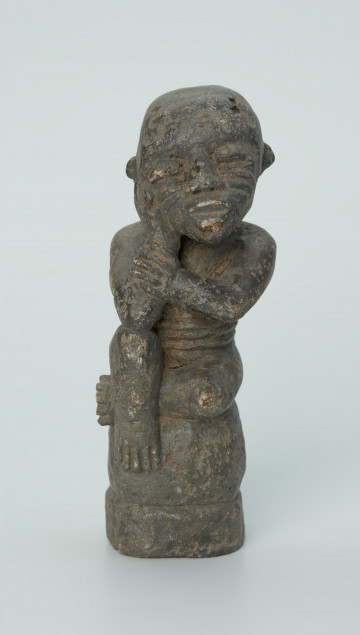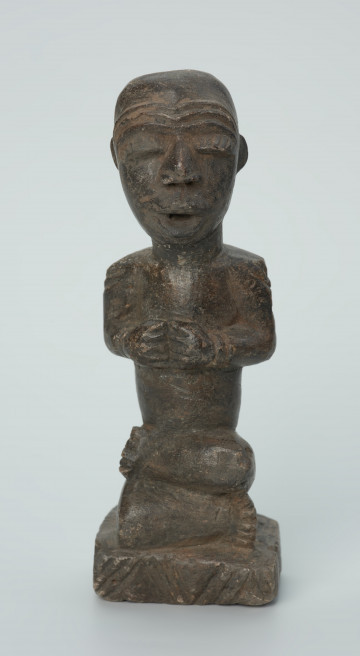
Ancestor worship figure
około 1901 — 2000
National Museum in Szczecin
Part of the collection: Mintadi figurines
The sculpture is an effigy of the village chief contemplating the fate of his people. The sculpture of a sitting man with his head supported by his hand and partially closed, thoughtful eyes is called fumani, or thinker. The figure in question was wrapped in plant fibre to which pieces of black fabric were attached. The presented figure is an idealised image of the leader. His meditative posture simultaneously reflects his destiny in the world of his ancestors and his ongoing responsibility for his living subjects. The figure's identity is revealed both through his characteristic posture and signs of rank, such as the cap called mpu decorated with geometric patterns, the bangles marked on his shoulders and the diagonal incisions made on his eyelids. The artist who made the sculpture focused primarily on capturing the contemplative facial features of the figure. The bold rendering of the torso and positioning arms also give a sense of reverie, contemplation, and rest.The word mintadi means guardians, custodians in the Kikongo language. It is believed that these figures were used to decorate and protect the tombs of rulers, royal dignitaries and their wives and mothers. According to oral tradition preached by the Bakongo, mintadi can move and act as intermediaries between the world of the living and the dead. They have not served magical purposes. Most mintadi are surrogates for a chief still alive but temporarily absent and effigies of deceased rulers.
Katarzyna Findlik-Gawron
Author / creator
Dimensions
cały obiekt: height: 20,2 cm, width: 8,3 cm
Object type
sculpture
Creation time / dating
Creation / finding place
Identification number
Location / status

około 1901 — 2000
National Museum in Szczecin

około 1901 — 2000
National Museum in Szczecin

około 1901 — 2000
National Museum in Szczecin
DISCOVER this TOPIC
National Museum in Szczecin
DISCOVER this PATH
Educational path